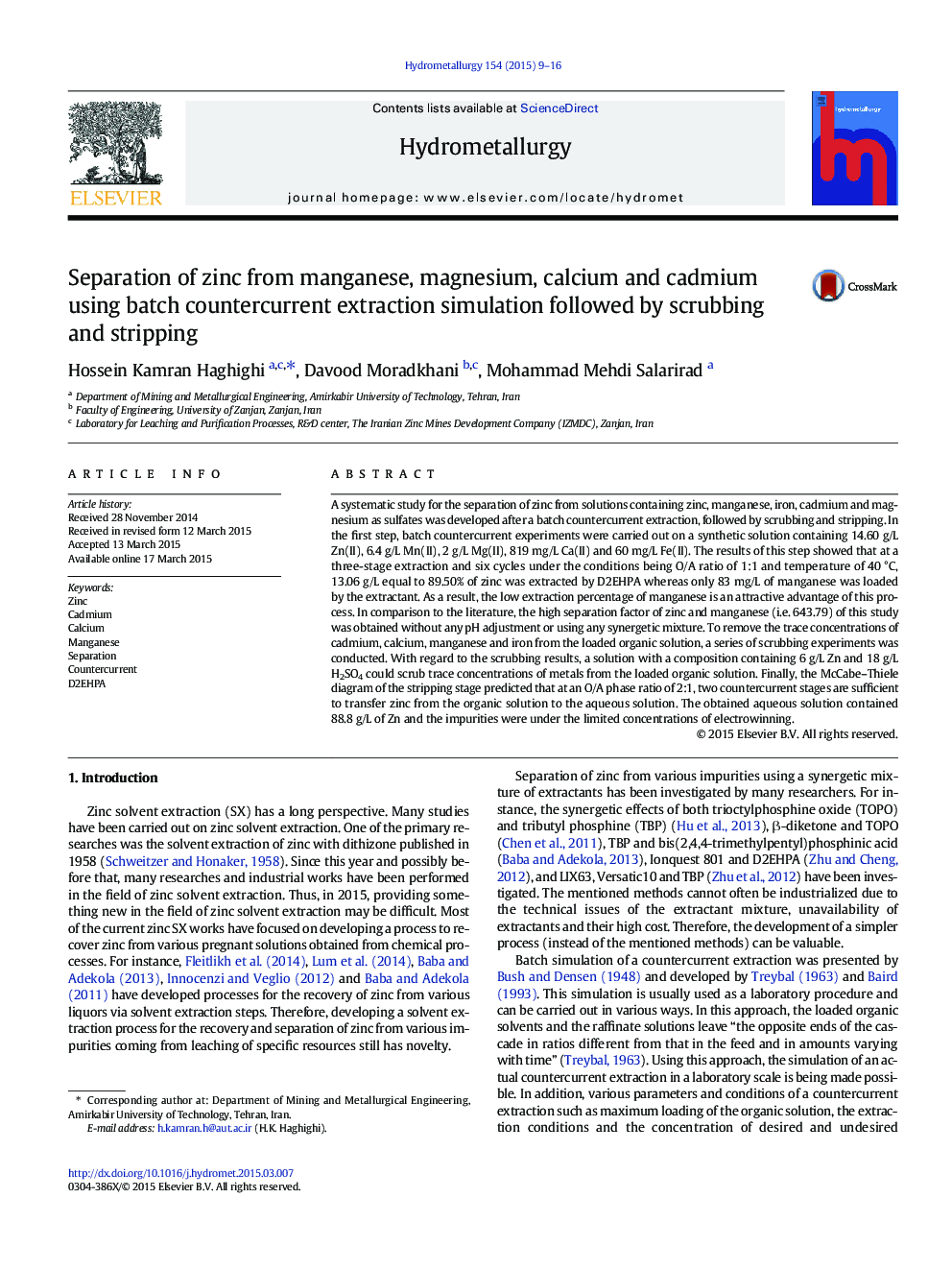| کد مقاله | کد نشریه | سال انتشار | مقاله انگلیسی | نسخه تمام متن |
|---|---|---|---|---|
| 212022 | 462030 | 2015 | 8 صفحه PDF | دانلود رایگان |
• A solvent extraction process for the separation of zinc from a complex solution was developed.
• Separation of zinc from a complex solution was carried out using an exclusive extraction design.
• Zinc was separated from Mn, Mg, Ca and Cd in the extraction, scrubbing and stripping processes.
A systematic study for the separation of zinc from solutions containing zinc, manganese, iron, cadmium and magnesium as sulfates was developed after a batch countercurrent extraction, followed by scrubbing and stripping. In the first step, batch countercurrent experiments were carried out on a synthetic solution containing 14.60 g/L Zn(II), 6.4 g/L Mn(II), 2 g/L Mg(II), 819 mg/L Ca(II) and 60 mg/L Fe(II). The results of this step showed that at a three-stage extraction and six cycles under the conditions being O/A ratio of 1:1 and temperature of 40 °C, 13.06 g/L equal to 89.50% of zinc was extracted by D2EHPA whereas only 83 mg/L of manganese was loaded by the extractant. As a result, the low extraction percentage of manganese is an attractive advantage of this process. In comparison to the literature, the high separation factor of zinc and manganese (i.e. 643.79) of this study was obtained without any pH adjustment or using any synergetic mixture. To remove the trace concentrations of cadmium, calcium, manganese and iron from the loaded organic solution, a series of scrubbing experiments was conducted. With regard to the scrubbing results, a solution with a composition containing 6 g/L Zn and 18 g/L H2SO4 could scrub trace concentrations of metals from the loaded organic solution. Finally, the McCabe–Thiele diagram of the stripping stage predicted that at an O/A phase ratio of 2:1, two countercurrent stages are sufficient to transfer zinc from the organic solution to the aqueous solution. The obtained aqueous solution contained 88.8 g/L of Zn and the impurities were under the limited concentrations of electrowinning.
Journal: Hydrometallurgy - Volume 154, April 2015, Pages 9–16
